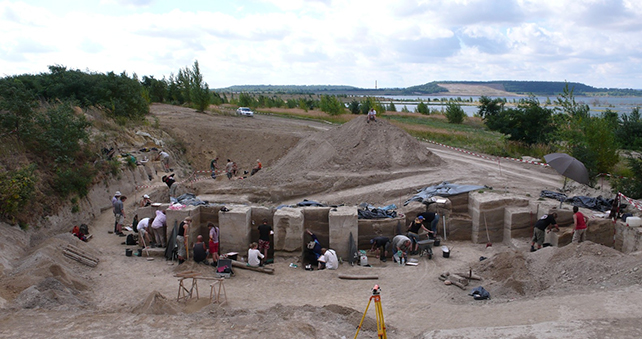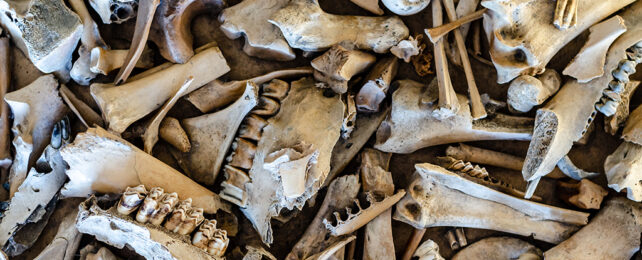The Neanderthals are our closest extinct relatives, and they continue to fascinate as we peer back through tens of thousands of years of history.
In a new discovery about this mysterious yet often familiar species, researchers have found ancient evidence of a Neanderthal "fat factory" in what is now Germany.
Operational around 125,000 years ago, the factory would've been a place where Neanderthals broke and crushed the bones of large mammals to extract valuable bone marrow and grease, used as a valuable extra food source.
Related: Neanderthal DNA Exists in Humans, But One Piece Is Mysteriously Missing
According to scientists, this is the earliest evidence yet for this type of sophisticated, large-scale bone processing, including both bone marrow and grease: the first confirmation Neanderthals were also doing this some 100,000 years before our species made it to Europe.
"This was intensive, organised, and strategic," says archaeologist Lutz Kindler from the MONREPOS Archaeological Research Center in Germany.
"Neanderthals were clearly managing resources with precision – planning hunts, transporting carcasses, and rendering fat in a task-specific area. They understood both the nutritional value of fat and how to access it efficiently – most likely involving caching carcass parts at places in the landscape for later transport to and use at the grease rendering site."
The researchers found their evidence on a site called Neumark-Nord in eastern Germany, not far from the city of Halle. They uncovered more than 100,000 bone fragments from what are thought to be at least 172 large mammals, including horses and deer.

A good proportion of the bones showed cut marks and signs of intentional breakage, pointing to deliberate butchering – these weren't just leftovers from a hunt. There were also indications of tool use and fires in the same location, all in a relatively small area.
Add all of that together, and it seems clear that some kind of systematic, organized bone processing was going on here. Similar processes have been linked to Neanderthal sites before, but not at this level of scale or sophistication.
"Bone grease production requires a certain volume of bones to make this labour-intensive processing worthwhile and hence the more bones assembled, the more profitable it becomes," says archaeologist Sabine Gaudzinski-Windheuser from MONREPOS.
We can add this to the long list of studies that have revealed Neanderthals were much smarter than they're often made out to be. Thanks to recent research we know they were adept swimmers, capable brewers, and abstract thinkers – who raised their kids and used speech patterns in a similar way to humans.
Ultimately though, Homo sapiens thrived and survived, while Neanderthals died out. That's another story that archaeologists are busy investigating the whys and wherefores of, but all we have of the Neanderthals now are the remains and the sites they left behind – which will no doubt give up more revelations in the future.
"The sheer size and extraordinary preservation of the Neumark-Nord site complex gives us a unique chance to study how Neanderthals impacted their environment, both animal and plant life," says computer scientist Fulco Scherjon from MONREPOS.
"That's incredibly rare for a site this old – and it opens exciting new possibilities for future research."
The research has been published in Science Advances.
